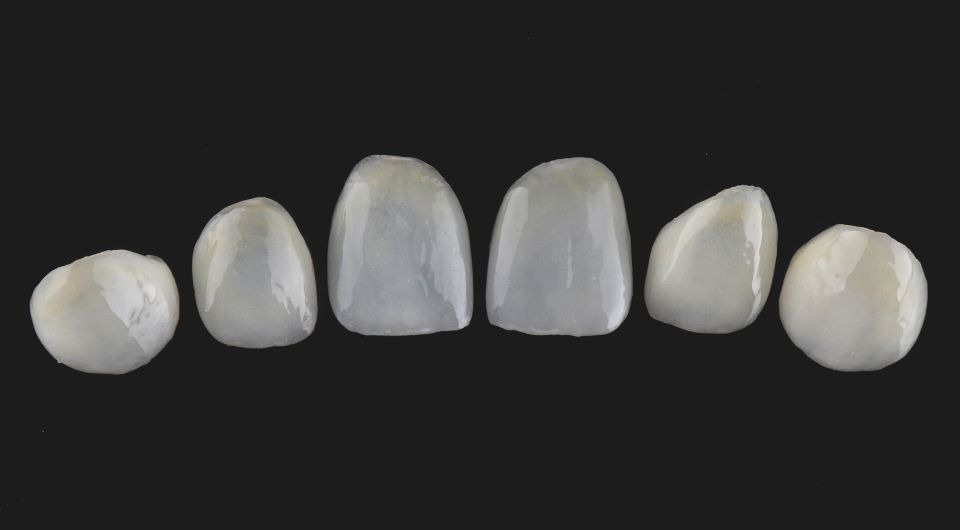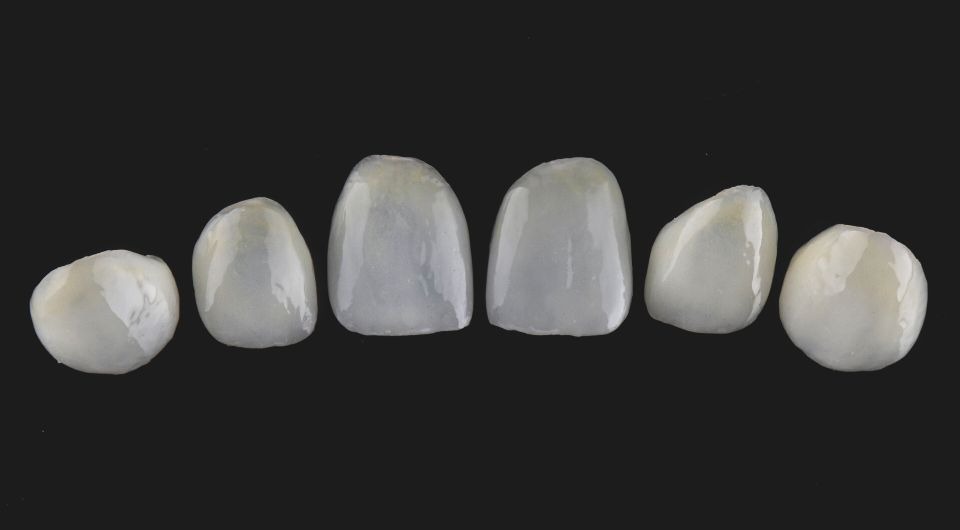
In today’s world, having an attractive smile has become one of the top priorities for many people. Dental veneers, one of the most popular cosmetic dentistry solutions, can dramatically correct imperfections such as discoloration, chips, or misaligned teeth. These thin, custom-made coverings placed over teeth create not only a natural and radiant appearance but also boost self-confidence.
When exploring the types of dental veneers, you’ll find they come in various forms, including composite and porcelain options, each with unique advantages, disadvantages, and characteristics. Choosing the right type depends on multiple factors, such as budget, aesthetic expectations, and the patient’s dental health condition. This article provides a comprehensive look at different veneer options, their differences, and how to select the best one for your needs.
Understanding the veneer placement process, the durability of each type of veneer, and proper maintenance can help patients make informed decisions and enjoy a gorgeous smile with healthy teeth for years to come. Join us as we explore all the details about dental veneers and important considerations for each option.
What Are Dental Veneers?
Dental veneers are thin, custom-made shells made of ceramic (porcelain) or composite that bond to the front surface of teeth. This minimally invasive treatment requires only slight enamel reduction (about 0.3-0.7mm) and is used to correct cosmetic concerns like permanent discoloration, minor chips, gaps between teeth, and slight misalignment. When considering the types of dental veneers, porcelain options create the most natural appearance due to their translucency and durability, while composite veneers are more affordable and can be completed in a single visit. The veneer process includes initial consultation, digital smile design, tooth preparation, impressions, and final bonding with special dental cement.
At D’Amico Dental Care, serving Watertown and Wayland, we specialize in veneers that can dramatically transform your smile, restoring beauty and confidence while preserving more healthy tooth structure than traditional crowns. However, veneers require special care – avoiding hard foods, maintaining excellent oral hygiene, and getting bi-annual check-ups are essential. Veneers typically last 10-15 years before needing replacement. Choosing between porcelain and composite depends on your budget, expectations, and the dentist’s recommendation. This treatment is ideal for people with relatively healthy teeth who want to enhance their smile.
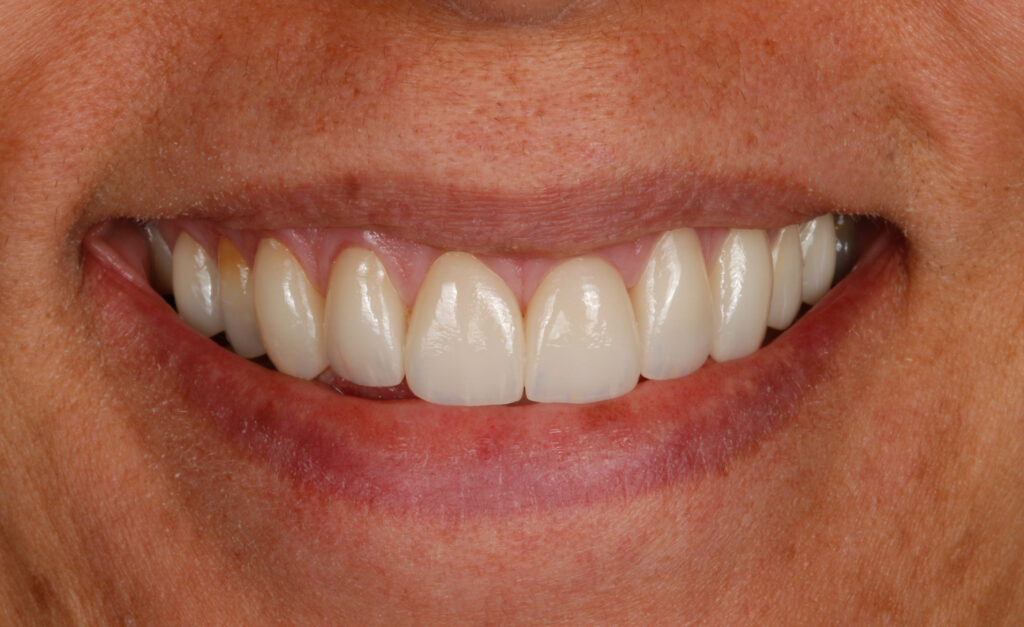
Different Types of Dental Veneers
These thin coverings that bond to your teeth to enhance your smile come in two main types of dental veneers: porcelain veneers and composite veneers. Porcelain veneers are made of special ceramic, look more natural, and last longer (about 10-15 years). Composite veneers, made of resin materials, are more affordable and can be completed in one visit, although they have a shorter lifespan (about 5-7 years).
When considering types of dental veneers it’s important to understand that both types can fix issues like tooth discoloration minor chips or gaps between teeth though your choice between them depends on your budget time and expectations while there’s also a special ultra-thin porcelain veneer called Lumineers that we’ll discuss later which is why your dentist should examine your teeth to recommend the best option for you.
Porcelain Veneers: The Ideal Choice for a Natural Smile
Porcelain veneers (also called ceramic laminates) are made from high-quality dental ceramic and are considered the gold standard in cosmetic dentistry today. These veneers are thin (0.5-0.7mm) yet extremely durable.
Key Features:
• Most natural appearance with enamel-like translucency
• Highly resistant to wear and staining (lasting 15+ years)
• Minimal tooth reduction (preserves healthy tooth structure)
• Excellent gum compatibility with no sensitivity
When exploring types of dental veneers, porcelain stands out for its:
Installation Process:
- Minimal tooth preparation (~0.5mm)
- Precise impressions sent to a dental lab
- Custom fabrication (takes 2-3 weeks)
- Final bonding with special adhesive
Best For:
• Fixing stained/discolored teeth
• Repairing chipped/broken teeth
• Closing gaps between teeth
• Reshaping mismatched teeth
With proper oral care and regular check-ups, porcelain veneers can last 10-15 years.
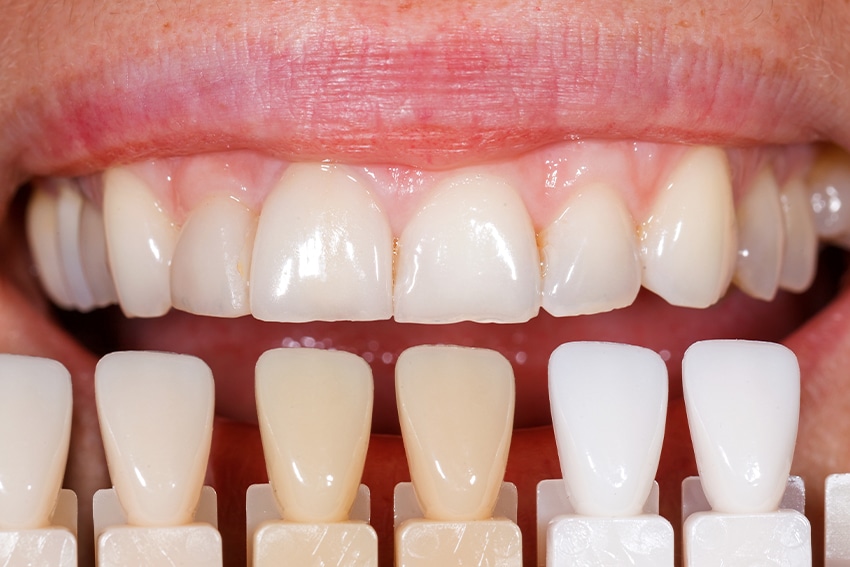
Composite Veneers: A Quick and Affordable Solution
Composite veneers are made from resin composite materials and are known as a fast and budget-friendly option in cosmetic dentistry. These types of dental veneers are shaped directly onto your teeth, eliminating the need for impressions and lab work.
Key Features:
• Done in just one visit (typically 1-2 hours)
• More affordable than porcelain veneers
• Minimal tooth preparation (only about 0.3mm)
• Easy to repair if damaged
Key Benefits:
• Shorter treatment time
• Adjustments can be made during the same appointment
• Great for minor, immediate fixes
• Requires very little tooth alteration
Limitations to Consider:
• Shorter lifespan (5-7 years with proper care)
• More prone to staining and discoloration
• Needs periodic polishing to maintain appearance
• Less translucent than porcelain options
This type of veneer is ideal for fixing small chips or cracks, correcting minor gaps between teeth, improving the color of front teeth, and providing emergency cosmetic fixes. These veneers are perfect for patients wanting immediate results at a lower cost, but they do require more maintenance over time.
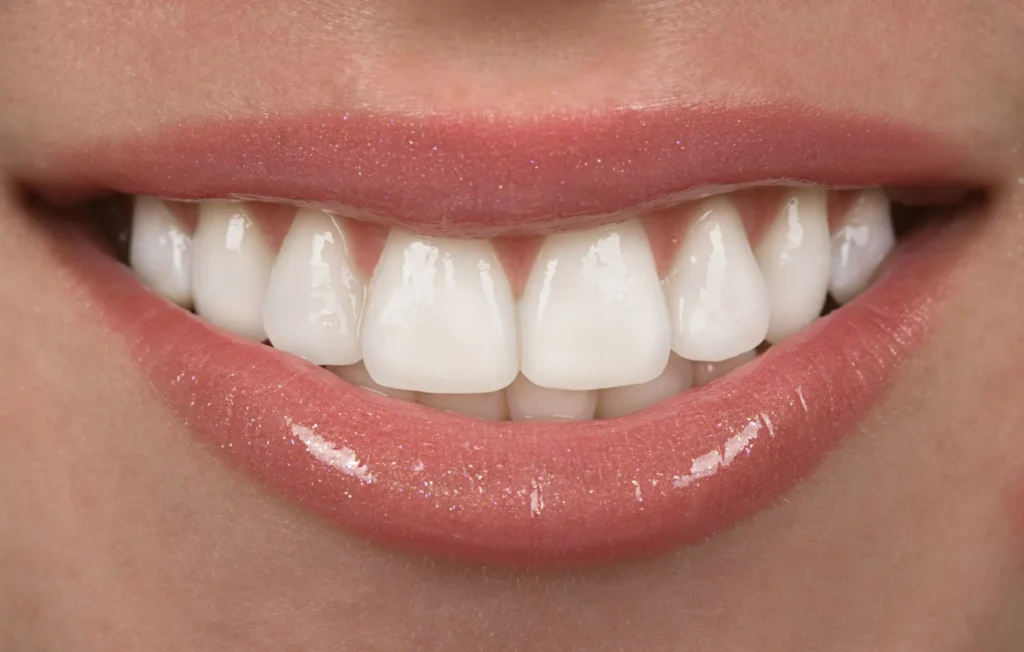
Lumineers: The Most Advanced Technology in Cosmetic Dentistry
Lumineers are a special category among types of dental veneers – ultra-thin ceramic veneers (just 0.2-0.3mm thick) that require little to no tooth preparation. Made with proprietary technology and advanced ceramic materials, their thinness creates an exceptionally natural appearance.
Unique Features of Lumineers:
• Usually no enamel removal (preserves tooth structure)
• Faster installation than traditional veneers (typically 2 visits)
• High translucency with natural light reflection
• Lasts 10-20 years with proper care
• Removable if needed (unlike conventional veneers)
Best For:
✓ Correcting dark or stained teeth
✓ Covering short or uneven teeth
✓ Closing gaps between teeth (diastema)
✓ Creating a Hollywood smile with minimal invasion
Considerations:
• Higher cost than standard veneers
• Requires highly skilled dentists for proper placement
• May not suit severely misaligned teeth
Lumeneers are perfect for those wanting a flawless smile without compromising their natural teeth.
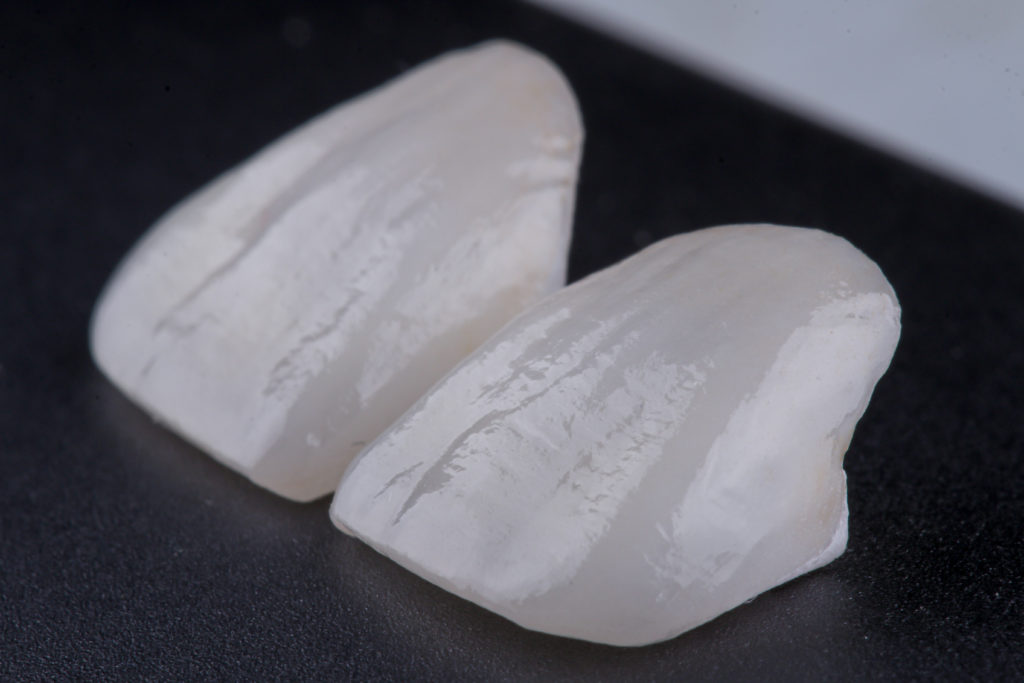
How to Choose the Right Type of Veneers for You
Selecting the right type of veneer requires professional evaluation by our cosmetic dentists at D’Amico Dental Care, where we serve patients in Watertown and Wayland, carefully assessing three key factors, including your current dental condition, aesthetic expectations, and budget.
Selection Guide Based on Treatment Needs:
Composite Veneers:
Ideal for quick, affordable fixes. These types of dental veneers can be done in one visit and work well for minor smile enhancements.
Porcelain Veneers:
Recommended for more natural, long-lasting results (10-15 years). They resist stains exceptionally well and create picture-perfect smiles.
Lumineers:
The top choice for patients wanting dramatic smile transformations with little to no tooth alteration.
Key decision factors include current dental health, available budget and time, the patient’s desired outcome, and the dentist’s expertise. Consultation with a prosthodontic and cosmetic specialist is essential. Sometimes, combining methods (like porcelain veneers for front teeth with composite for side teeth) delivers the best results.
Durability and Longevity of Different Types of Dental Veneers
Porcelain veneers, lasting 10-15 years (and sometimes up to 20 years), are considered the most durable among types of dental veneers. Their dense ceramic structure makes them highly resistant to wear, chewing pressure, and discoloration, with very low fracture rates. In comparison, composite veneers typically last 5-7 years, being more prone to wear, staining, and damage, requiring periodic repairs. Lumineers, an ultra-thin porcelain variety, offer 10-20 years of longevity with greater flexibility, making them an excellent patient choice.
Several factors affect veneer durability:
• Dentist’s installation expertise
• Material quality
• Patient’s oral hygiene habits
• Avoiding harmful habits like teeth grinding or chewing hard objects
“ Porcelain veneers show excellent aesthetic results and predictable longevity of the treatment, while composite veneers can be considered as a good conservative option, but with less durability. “ (pubmed.ncbi.nlm.nih.gov )
When considering types of dental veneer, it’s important to note that regular 6-month check-ups significantly extend veneer lifespan. While porcelain veneers and Lumineers have higher initial costs, their long-term value shines through fewer replacements and repairs, making the final choice dependent on your dental condition expectations and the dentist’s professional recommendation.
| Veneer Type | Average Lifespan | Maximum Lifespan* | Key Advantages | Primary Limitations |
| Porcelain Veneers | 10-15 years | 20-25 years | • Superior stain resistance • Natural light refraction • High fracture resistance | • Requires significant enamel prep • Irreversible procedure |
| Lumineers | 10-20 years | 25+ years | • Minimal-prep (0.2mm) • Reversible • Excellent flexural strength | • Limited case selection • Higher material cost |
| Composite Veneers | 5-7 years | 10 years | • Single-visit application • Easily repairable • Lowest upfront cost | • Prone to staining/wear • Frequent polishing is needed |
Procedure Differences Between Types Of Dental Veneers
Composite veneers offer the fastest solution, while porcelain veneers and Lumineers take longer to create but deliver more natural-looking results. When considering different types of dental veneers, here’s what to expect:
Porcelain Veneers:
• Requires at least two appointments
• About 0.5-0.7mm enamel removal
• Precise impressions sent to a dental lab
• Lab fabrication (takes 2-3 weeks)
• Final bonding with special adhesive
• Typically needs local anesthesia
Composite Veneers:
• Can be completed in one visit
• Minimal preparation (~0.3mm)
• Direct application by a dentist
• Shaping and polishing the same day
• Shorter treatment (1-2 hours)
• Usually anesthesia-free
Lumineers:
• Two-visit process (like porcelain)
• Little to no tooth preparation
• Custom-made in specialized labs
• Special bonding technique
• Takes about 3-4 weeks to create
| Aspect | Porcelain Veneers | Composite Veneers | Lumineers |
| Treatment Time | 2-3 weeks (2+ visits) | 1 visit (1-2 hours) | 3-4 weeks (2 visits) |
| Tooth Preparation | 0.5-0.7mm enamel reduction | 0.3mm minimal prep | 0.2mm or less (often no-prep) |
| Fabrication | Lab-made (feldspathic/lithium disilicate) | Chairside direct application | Lab-made (Cerinate porcelain) |
| Anesthesia | Usually required | Typically not needed | Rarely needed |
| Bonding Process | Dual-cure resin cement | Light-cured composite | Proprietary cement system |
| Appointment 1 | Prep, impressions, temporaries | Full treatment completed | Digital scans/impressions |
| Appointment 2 | Final bonding | N/A | Final bonding |
| Temporaries | Required (2-3 weeks) | Not needed | Usually not needed |
Maintenance and Care Tips for Each Veneer Type
At D’Amico Dental Care, with offices in Watertown and Wayland, we recommend these essential care tips for your veneers. Porcelain veneers, being the most durable among types of dental veneers, require special care. Use a soft-bristled toothbrush with gentle circular motions and non-abrasive toothpaste. Floss carefully around the gumline and avoid chewing hard objects. Professional cleanings every 6 months and a nightguard for teeth grinders are highly recommended.
Among dental veneer types, composite veneers require more intensive maintenance due to their susceptibility to staining and wear. This necessitates brushing after meals, polishing every 1-2 years, and avoiding staining agents like coffee and cigarettes to preserve their appearance.
While Lumineers are resilient, they still require attention. An electric toothbrush with soft bristles and implant-specific floss works best. Avoid sticky foods and get annual cosmetic check-ups.
For all types of dental veneers:
• Avoid sudden temperature changes
• Seek immediate help if loosening occurs
• Get professional cleanings every 6 months
• Use sports mouthguards during risky activities
Following these guidelines will maximize your veneers’ lifespan and keep your smile beautiful for years.
Source: PubMed
FAQ
1. What Are the Unique Characteristics of Porcelain Veneers?
Porcelain veneers are crafted from high-quality dental ceramic, offering the most natural appearance among all veneer types. These laboratory-fabricated restorations require minimal tooth preparation (0.3-0.7mm reduction). Their exceptional stain resistance and 10-15 year lifespan make them a premium choice.
2. How Are Composite Veneers Fabricated and Installed?
- Directly sculpted in-office using composite resin
- Typically completed in a single visit
- Minimal or no tooth preparation required
- More affordable but shorter lifespan (5-7 years)
- Higher susceptibility to staining
3. What Are the Fundamental Differences Between These Veneer Types?
Porcelain veneers offer greater durability and aesthetics but require higher cost and longer treatment time. Composite veneers are faster and more cost-effective, but need more maintenance and earlier replacement. In terms of appearance, porcelain veneers have more natural translucency and shine that closely resembles natural tooth enamel.
Key differences:
- Porcelain veneers:
- More durable and beautiful
- Higher cost
- Longer treatment process
- Natural enamel-like transparency and shine
- Composite veneers:
- Quicker and more economical
- Require more care
- Need earlier replacement
- Less natural translucency compared to porcelain
4. What Are the Procedures for Each Type?
Porcelain Veneers:
- Tooth preparation & impression (Visit 1)
- Laboratory fabrication (1-2 weeks)
- Permanent bonding (Visit 2)
Composite Veneers:
- Tooth conditioning
- Direct composite layering
- Curing & polishing (All in one visit)
5. What’s the Price Difference?
Porcelain veneers cost 2-3x more due to:
✓ Premium materials
✓ Laboratory fees
✓ Long-term durability
Note: Composite may incur higher long-term costs from replacements
6. How to Maintain Each Veneer Type?
For Porcelain:
- Regular brushing/flossing
- Routine dental checkups
- Avoid excessive force
For Composite:
- Strict oral hygiene
- Avoid staining foods/drinks
- More frequent polishing
- No smoking
7. How to Select Between Them?
Choose Porcelain When:
- Seeking premium aesthetics
- Budget allows for investment
- Wanting a long-term solution
Consider Composite For:
- Immediate results
- Cost-sensitive cases
- Trial before a permanent solution
8. Which Delivers Superior Cosmetic Outcomes?
Porcelain Veneers Excel In:
- Light refraction like natural enamel
- Lifelike translucency
- Stable color over time
- Seamless gum integration
Composite Limitations:
- Gradual discoloration
- Less surface polish
- Reduced light transmission

